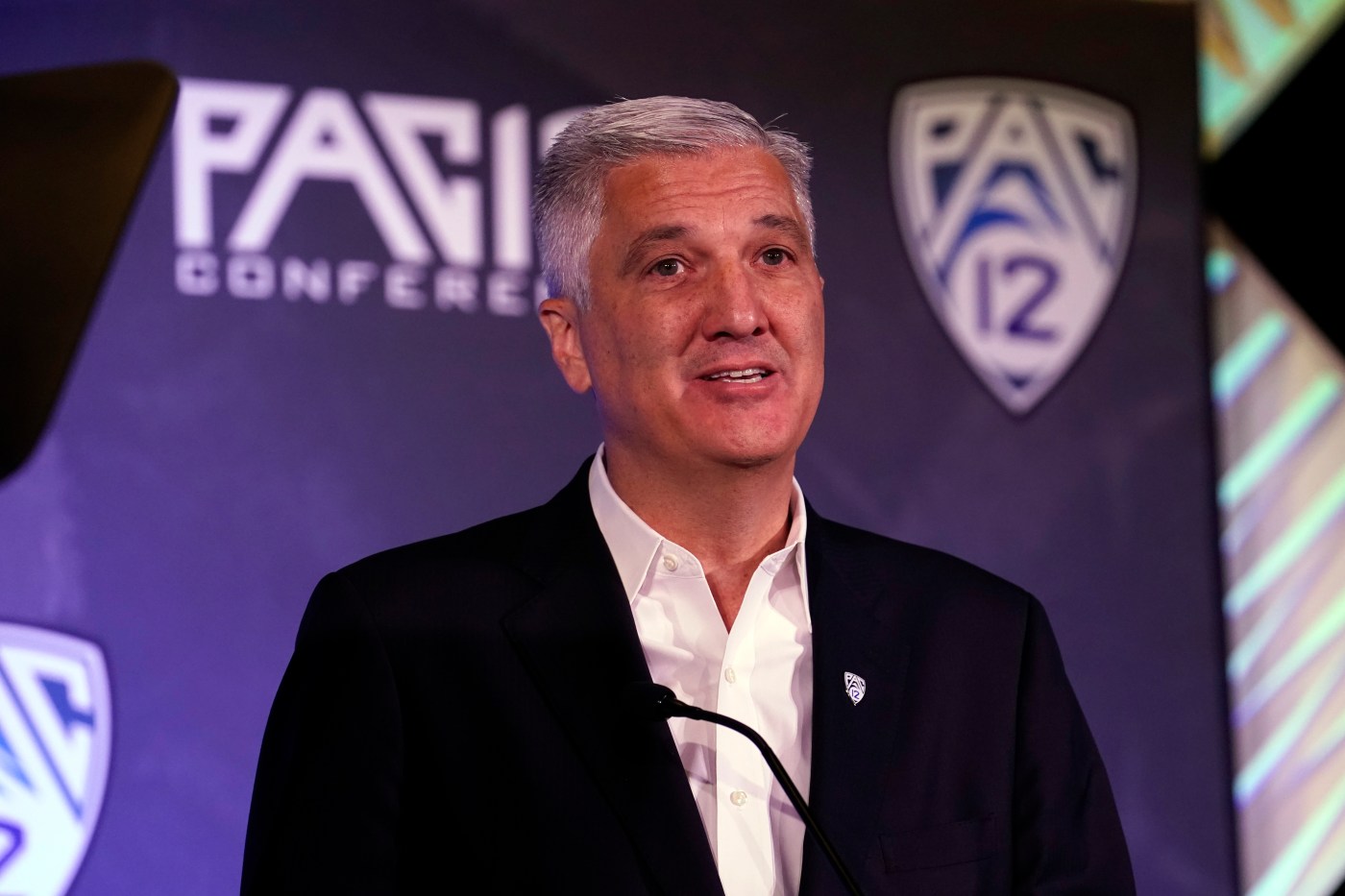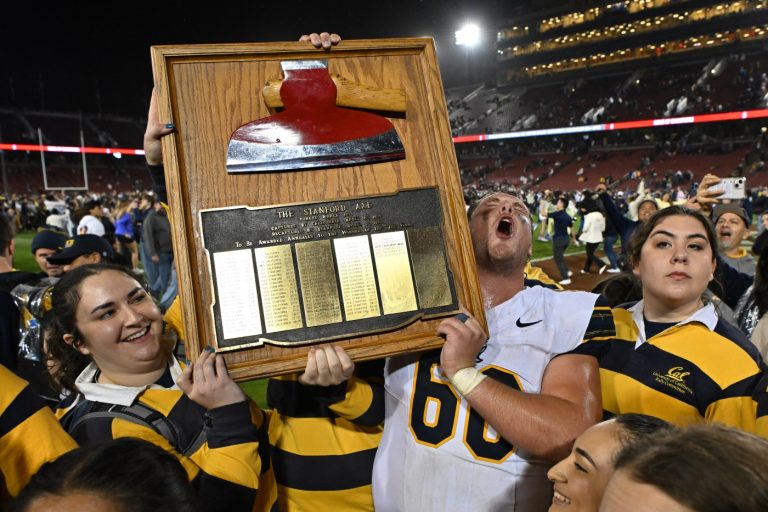The decision to add the top football schools in the Mountain West did not require Pac-12 commissioner Teresa Gould, Washington State and Oregon State executives or their strategic consultants to reimagine college sports on the West Coast.
The blueprint was collecting dust in a filing cabinet in the conference office.
We’re joking, but only about the location.
The idea itself — to add Boise State, Colorado State, Fresno State and San Diego State — was more than a year old.
In the spring of 2023, before the Pac-12 collapsed, commissioner George Kliavkoff was presented with a backup option in the event Oregon and Washington left for the Big Ten and the Four Corners schools bolted to the Big 12.
The specifics, according to an industry source:
Invite the top football schools from the Mountain West, pair them with WSU and OSU, then convince Cal and Stanford to stay put.
By remaining in the Pac-12, the Bears and Cardinal would have had a vastly easier path into the College Football Playoff than in the ACC (or anywhere else).
Also, arrangements would have been made for them to receive disproportionately large shares of conference revenues.
Their presence, in theory, would have allowed the restructured conference to secure a media rights deal that paid each of the Bay Area schools more than they will receive for the first seven years of their term in the ACC ($11 million each, approximately).
With the Cardinal and Bears as anchors, plus WSU, OSU and the four Mountain West programs, the eight-team conference could have then grabbed SMU and at least one more school in valuable media markets in the Central Time Zone.
But Kliavkoff never considered it, the source said; nor did he request a fully formed proposal.
Other new and nuggets related to Pac-12 expansion:
— Boise State athletic director Jeramiah Dickey offered perspective on the timing of the expansion move during his news conference Thursday.
“Where the conversation really started to escalate was after the negotiations ended with the Mountain West and the Pac-12 in terms of the scheduling alliance.”
Crucial details might remain private forever. But Dickey’s comment suggests the Mountain West’s hard-line stance on the financial piece of the alliance ended up backfiring, driving the Pac-12 toward the decision to use its war chest to expand.
The Pac-12 and Mountain West had until Sept. 1 to extend their football scheduling partnership for 2025.
— Per an industry source: UNLV’s tricky political situation — the Rebels are tied to Nevada, at least for the time being — was part of the Pac-12’s decision to exclude the school from the initial expansion wave. But it wasn’t the only reason.
The desire to maintain maximum optionality and explore schools in the eastern half of the country was also a factor.
Related Articles
Best of the West rankings: Utah on top, WSU and UNLV soar, Zona slips
Saturday Night Five: WSU’s memorable week, Oregon’s dominance, desert developments and checking on Pac-12 prospects
Pac-12 expansion: Cal and Stanford have no interest in returning (and couldn’t even if they did)
Mailbag: All about Pac-12 expansion, the CFP factor, options for the final spots and the future of the Mountain West
West Coast recruiting roundup: Elite Utah WR sets date, Cal’s QB commit and a big weekend for Oregon State
— Multiple industry sources said the Pac-12 brand is significantly more valuable for media rights and sponsorship opportunities than the Mountain West brand.
“Across the country, people recognize the Pac-12 name,” one source said, “and many of them don’t stop to think which schools are part of the conference.”
— Oregon State athletic director Scott Barnes offered insight into the Pac-12’s membership strategy last week, telling OregonLive that nine schools is an ideal number for football.
With nine, each team plays eight conference games and four non-conference games.
With eight schools, each team would need to play five non-conference games, unless the conference created home-and-home series for each team with designated rivals.
(Don’t dismiss unusual scheduling strategies. Every option is being explored.)
That fifth non-conference game would be difficult to schedule because so many major college teams are booked up with conference games in October and November.
Also, there’s an added expense: Group of Five and FCS schools could command more than $1 million per game to visit the Pac-12 campuses.
*** Send suggestions, comments and tips (confidentiality guaranteed) to wilnerhotline@bayareanewsgroup.com or call 408-920-5716
*** Follow me on Twitter/X: @WilnerHotline












